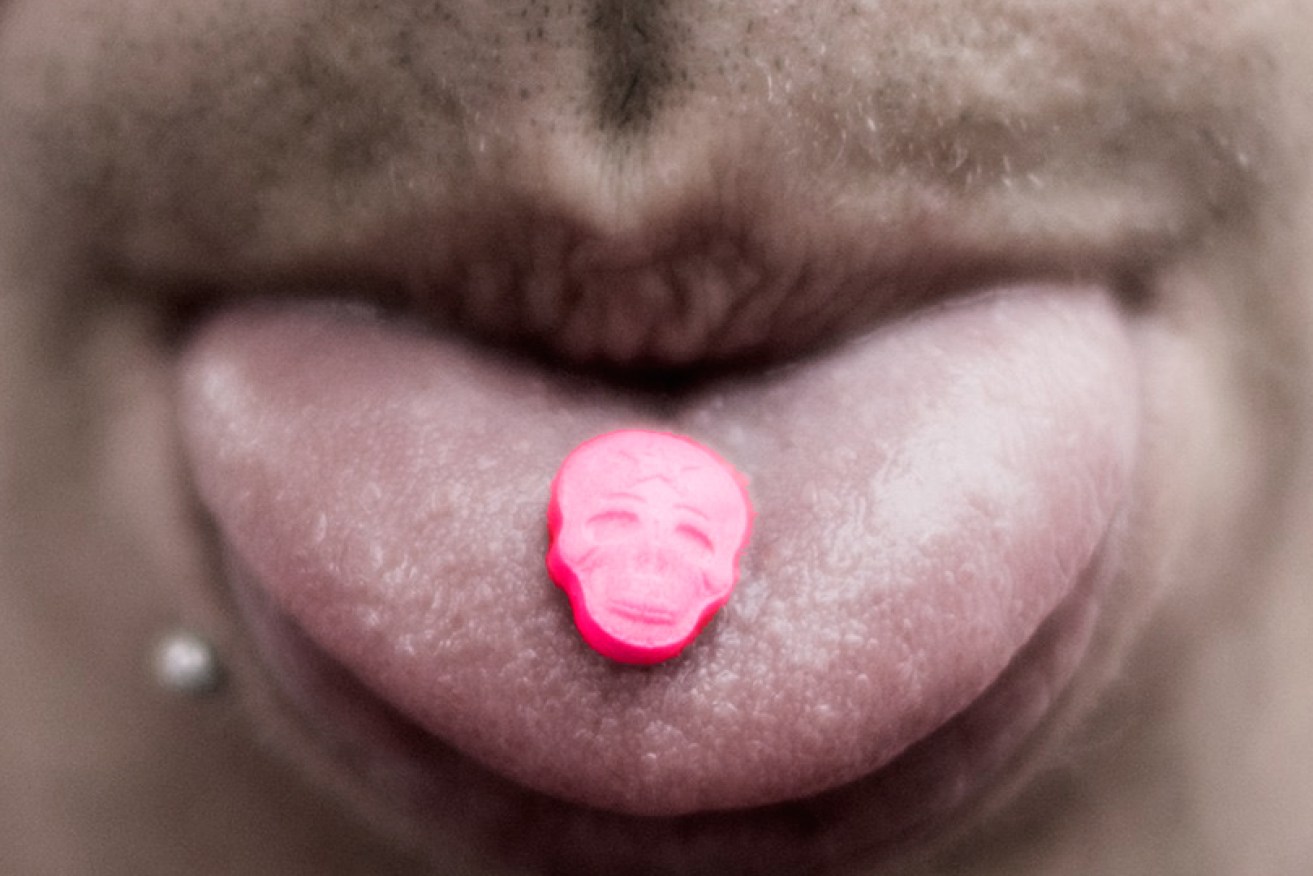Deadly new drug has reached Australia, pill testing reveals


The ecstasy pills were hidden in wine bottles intercepted by Customs officers. Photo: AAP
One of the deadly substances uncovered at Canberra’s Groovin The Moo festival on Sunday is a highly potent new stimulant responsible for scores of deaths and hospitalisations worldwide.
The little-known ‘n-ethyl pentylone’ is part of the ‘bath salts’ (cathinone) family of stimulants. It is often sold as a white or coloured powder and looks just like MDMA (ecstasy) but can be three times more potent, depending on the dosage.
One dose for ecstasy is roughly 100 milligrams, whereas a dose for n-ethyl pentylone is as little as 30 milligrams. The drug may cause convulsions, paranoia and may result in death.
The substance was identified during Australia’s first legal pill-testing trial in Canberra, conducted by the Safety and Testing and Advisory Service at Festivals and Events (STA-SAFE) in collaboration with the ACT government and ACT Police.
Dr David Caldicott, an expert in emergency medicine who was part of the STA-SAFE group on Sunday, described the finding as an unexpected “red flag”.
“I’ve not heard of a lot of issues with it in Australia yet, so this is a double cause for alarm,” he told The New Daily.
“It has been clearly responsible for the deaths of people overseas, and a rather unfortunate phenomenon known as ‘mass casualty overdoses’, where 10-20 people drop simultaneously. So, it’s of great concern to the music festival environment.”
The prevalence of the new drug in Australia is unknown. Outside of mobile drug testing services at festivals, there is very little data available on n-ethyl pentylone substitution.

The deadly substance, hidden in what look like normal ecstasy pills, can cause ‘mass casualty overdoses’, expert warns. Photo: AAP
Publishing their findings in March 2018, US and Brazil researchers confirmed they had detected the presence of n-ethyl pentylone in the blood of 26 people who had died of drug overdoses. Another test by the researchers, involving a saliva swab of five drug users who were attending a music festival, also confirmed the presence of the substance.
In February, New Zealand police issued a warning about n-ethyl pentylone being sold as MDMA after 13 people were hospitalised in Christchurch, including a 15 year old. Subsequent medical testing confirmed the drug was n-ethyl pentylone.
Drug testing social enterprise Know Your Stuff NZ says it has taken roughly 400 samples at music festivals in New Zealand in 2018 to date. Preliminary data from the organisation obtained by The New Daily reveals that 20 per cent of the substances presumed to be MDMA at New Zealand music festivals this year were in fact a dodgy batch of some type of ‘bath salts’ (cathinone) stimulants.
“We have found n-ethyl pentylone at every event we have been to this year,” director Wendy Allison told The New Daily.
According to the organisation, 30 per cent of the drugs tested in the 2016-17 New Zealand festival season were not MDMA as expected. Instead, eight substances were confirmed as n-ethyl pentylone and another 18 were classed as unknown cathinone.
Ms Allison said she was not surprised by the deadly finding on our shores.
“This stuff emerged around 2016 in the United States. We know by the summer of 2017 it was in New Zealand. Our counterparts in the UK have been finding it. So, completely unsurprised that it has been found in Australia as well.”
In May 2017, toxicology results conducted in Florida confirmed that a US man died following accidental intoxication caused by n-ethyl pentylone.
In the UK, drug testing organisation The Loop identified 10 samples of n-ethyl pentylone which was mis-sold as MDMA, as reported in Vice.
Mobile pill testing is currently available in approximately 20 countries in Europe, New Zealand and the Americas.
In Canberra, chemists who were on-site examined samples of the products using a highly specialised machine that contains more than 35,000 profiles of known substances and substitutes from around the world. The database had been updated as recently as Thursday.
Of the 128 participants and 85 samples tested on the day, the overwhelming majority of people mistakenly believed they were in possession of MDMA. However, mobile pill testing revealed that roughly 50 per cent had a bad batch.
Most of the products were found to contain inactive ingredients, such as toothpaste, condensed milk, ‘filler’ or colour changing agents, and at least two types of paint.
On Monday, organisers confirmed that a second product had been red flagged because the contents were not recognised by the machine and required further laboratory testing.
“One substance had two entities that did not match anything in the machine … and that makes me very nervous,” Dr Caldicott said.
“Unfortunately this is just another product that is out there, and no doubt we’ll find it again … but at the moment we don’t know what it is.”
The New Daily has contacted ACT Health and the Police Forensic Unit for further information.








